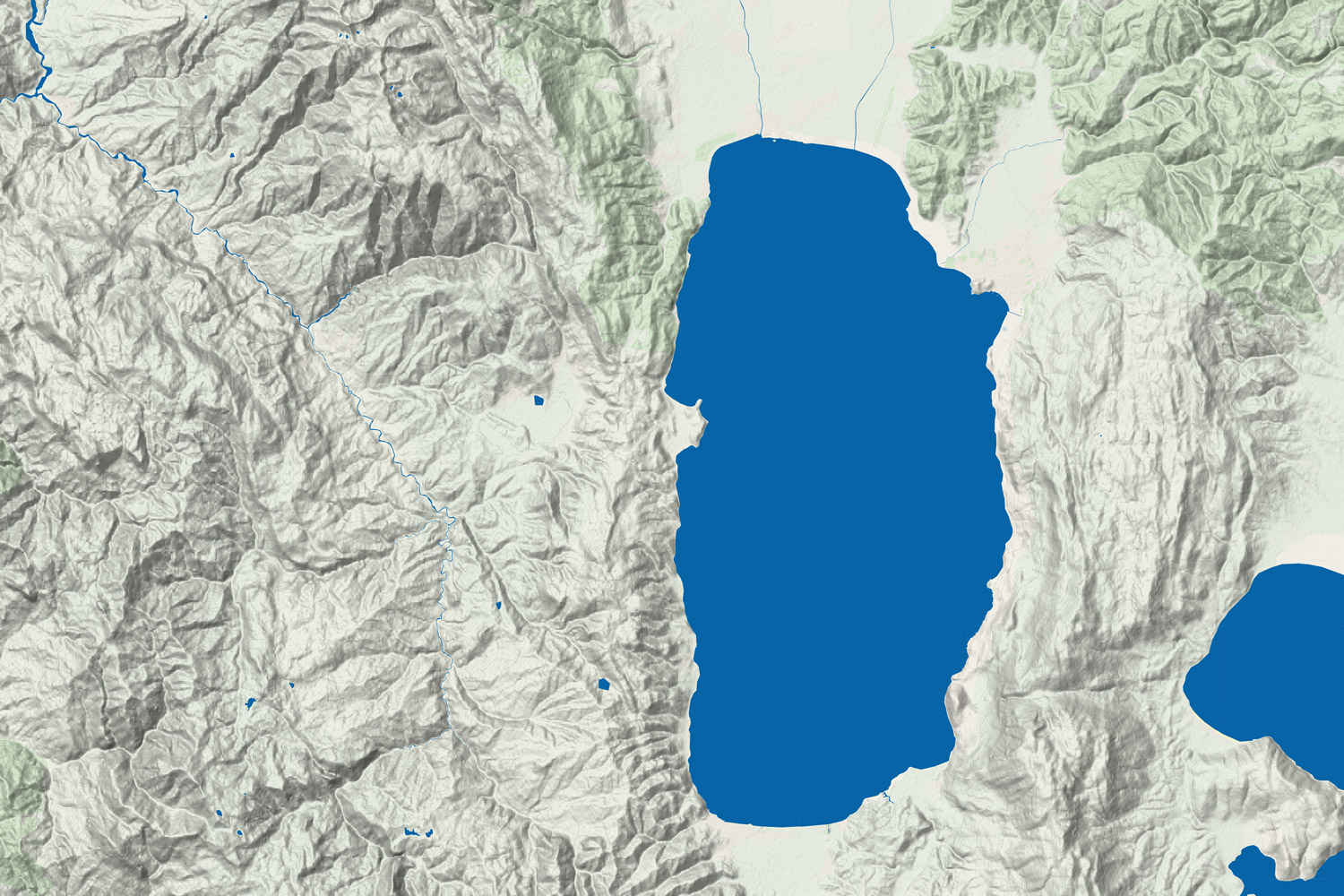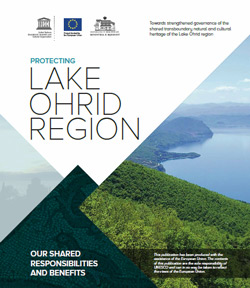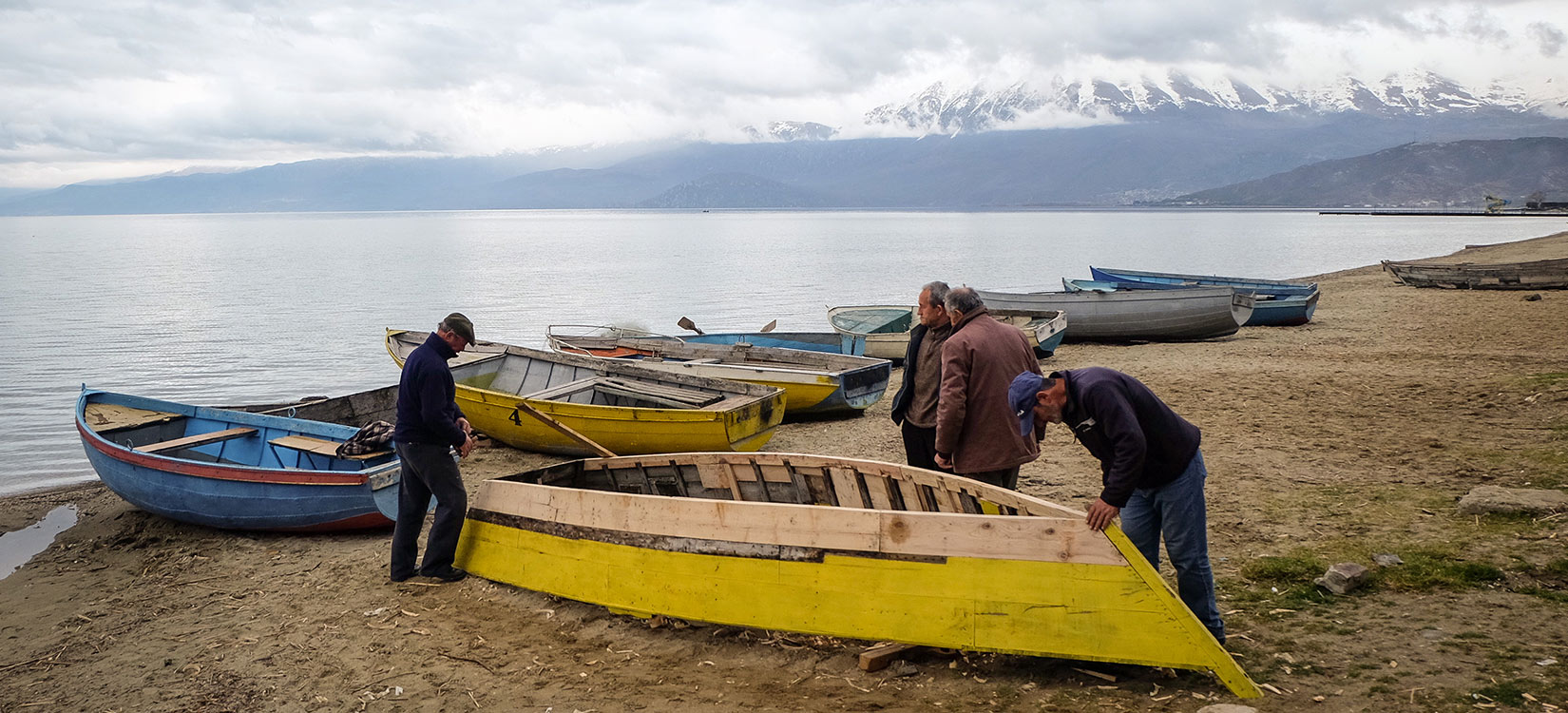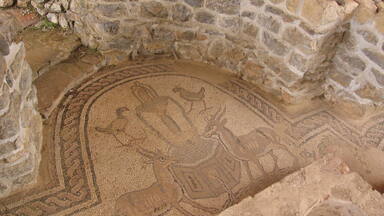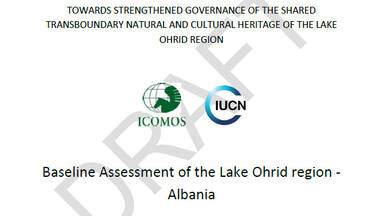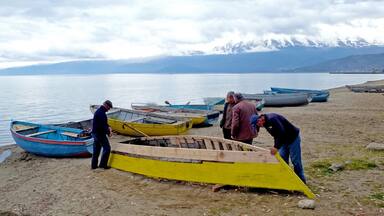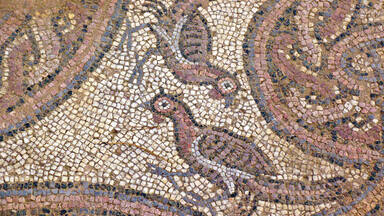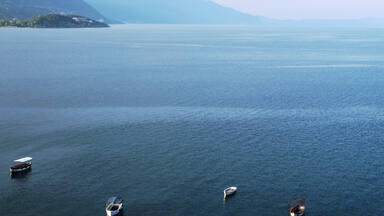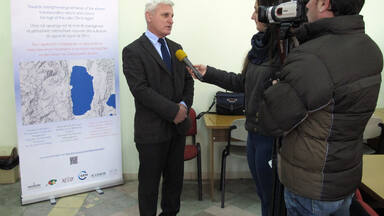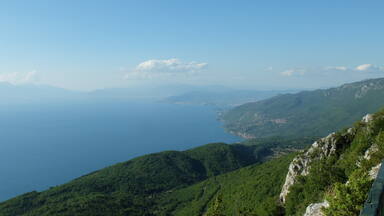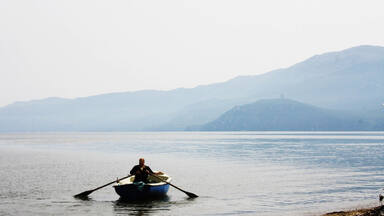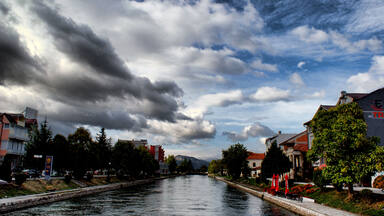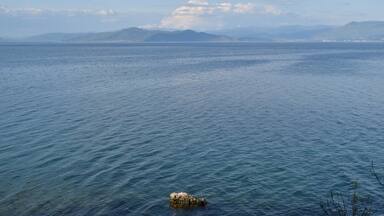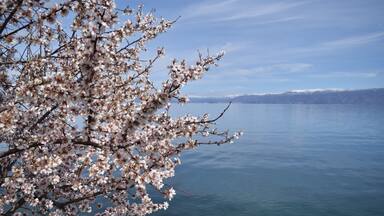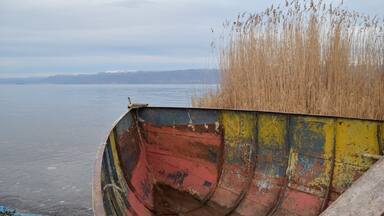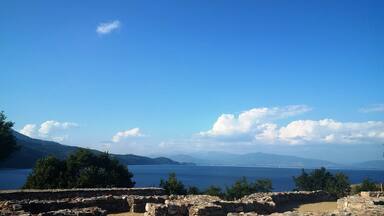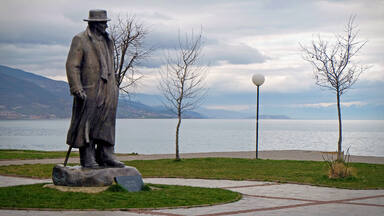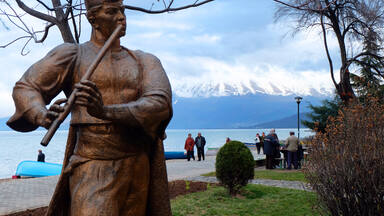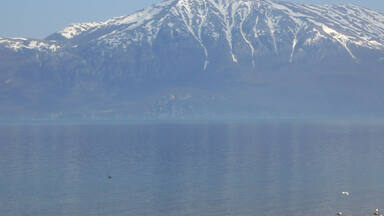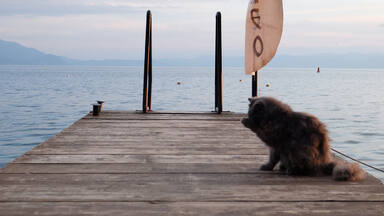This European Union funded project aims to improve transboundary cooperation and management effectiveness for the protection of the natural and cultural heritage in the Lake Ohrid region.
The Lake Ohrid region is home to one of the world’s oldest lakes and is one of the most unique sources of biodiversity in Europe. The convergence of distinctive natural values with the quality and diversity of its cultural, material and spiritual heritage makes this region truly unique.
Two-thirds of Lake Ohrid is located in North Macedonia and is inscribed on the World Heritage List as the property “Natural and Cultural Heritage of the Ohrid region”. The integrity of this World Heritage property would be significantly reinforced by extending it to the remaining one-third of Lake Ohrid located in Albania.
Scoping Phase
2011–2014
In 2012 an Advisory Scoping Mission was carried out to assess the feasibility of extending the already inscribed property to Albania. This mission was carried out by two Advisory Bodies to the World Heritage Committee (ICOMOS and IUCN) and was financed through International Assistance of the World Heritage Fund.
The Mission identified the following main threats
Unplanned urban development
Natural habitat
alteration
Destruction and depletion of natural resources
The underlying causes of these threats have been identified as follows
Management challenges
Institutional arrangements and lack of coordination and cooperation
Expertise and knowledge
Need for comprehensive understanding of the heritage and the regional values and their threats
Transboundary cooperation
Need to strengthen transboundary management structure
Awareness
Need for shared common vision both within communities and across boundaries
Implementation Phase
2014–2018
© Christophe Graz
The implementation of the EU-funded project “Towards strengthened governance of the shared transboundary natural and cultural heritage of the Lake Ohrid region” aims to strengthen transboundary cooperation and management effectiveness of the region’s natural and cultural heritage by addressing the main threats identified in the 2012 Advisory Scoping Mission.
Improved transboundary
cooperation and management
Improved transboundary cooperation and management effectiveness in place for the protection and sustainable development of the natural and cultural heritage of the Lake Ohrid region (expected result 1)
Reinforcement of transboundary
cooperation (activity 1)
Establishment
of integrated management mechanisms (activity 2)
Capacity Building on management effectiveness and transboundary cooperation (activity 3)
Cultural and natural
assets identified and safeguarded
The important cultural and natural assets of the Lake Ohrid region identified and safeguarded by the local and national authorities (expected result 2)
Profiling of the transboundary area and its sustainable tourism opportunities (activity 4)
Technical Assistance for the preparation of the extension file of the World Heritage property (activity 5)
Implementation of waste awareness campaign through Pilot Actions on Waste Water and Solid Waste (activity 6)
Financing of the implementation phase
The overall budget of this three-year project is approximately 2.4 million USD. The European Union contribution amounts to 1.7 million EUR and is provided in the framework of the EU assistance to pre-accession countries in the field of Environment and Climate Change. The Government of Albania co-finances 10% of the overall budget with approximately 240 000 USD.
Project documents
#OurLakeOhrid
Photo & Story Contest
Contest 2017
The second Photo & Story Contest is taking place on Instagram and the Lake Ohrid Heritage Facebook page from 25 July to 25 September 2017.
Contest 2016
The first contest took place on Instagram and the Lake Ohrid Heritage Facebook page from 7 March to 7 April 2016.
History of the Pilot Project
in the Lake Ohrid Region
-
1979
The Lake Ohrid is first inscribed on the World Heritage List as a natural property, under criterion (iii) on superlative natural phenomena which is today criterion (vii).
-
1980
The World Heritage property is extended to cultural criteria (i), (iii) and (iv) and becomes one of the first mixed World Heritage properties.
-
1998
A joint UNESCO-ICOMOS-IUCN monitoring mission is carried out for the first time since inscription. The mission highlights that economic and demographic developments pose threats to the values of the site that can only be addressed through an integrated approach and protective measures that link the cultural and the natural heritage preservation.
The state of conservation of the property is discussed by the World Heritage Bureau in 1998 in Kyoto, Japan (Decision 22 COM VII.30).
-
2008
At its 32nd session (Quebec City, 2008), the World Heritage Committee initiated the Upstream Process during a reflection on the future of the World Heritage Convention. The Upstream Process is an experimental approach aimed at reducing the number of properties that experience significant problems during the process of nomination for inscription on the World Heritage List.
-
2009
The World Heritage Committee approves a minor boundary modification that slightly reduces the northern and western boundaries of the property. Within this process, the Committee encourages the creation of a buffer zone as well as undertaking efforts towards a transboundary extension of the World Heritage property to include the Albanian part of Lake Ohrid.
-
2011
The World Heritage Committee, in decision 35 COM 12C, selects 10 Pilot Projects to test the effectiveness of the Upstream Process, including the Pilot Project “Natural and Cultural Heritage of the Ohrid Region” (Albania and the Republic of North Macedonia).
-
2011
The State Party of Albania submits “Natural and Cultural Heritage of the Ohrid region” on the Tentative List as a first step in the World Heritage property extension process.
-
2012
Phase One of the Upstream process entails the Advisory Scoping mission to assess the feasibility of an extension for nomination to the already inscribed site. This mission identifies threats affecting natural and cultural heritage of the Lake Ohrid region such as unplanned urban development, fishing and habitat alteration as well as unsustainable waste actions.
-
2014
Phase Two of the Pilot Project for the Upstream process initiates the project “Towards strengthened governance of the shared transboundary natural and cultural heritage of the Lake Ohrid region”.
-
2018
Scheduled completion of the Pilot Upstream Project.
On the Web
Blog
Delegation of the European Union for Albania
Newsletter
Summer 2018
Albanian English Macedonian
Spring 2018
Albanian English Macedonian
Autumn 2017
Albanian English Macedonian
Summer 2017
Albanian English Macedonian
Spring 2017
Albanian English Macedonian
Autumn 2016
Albanian English Macedonian
Summer 2016
Albanian English Macedonian
Spring 2016
Albanian English Macedonian
Partners
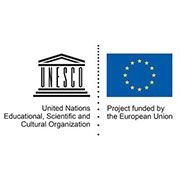

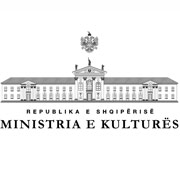


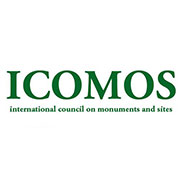
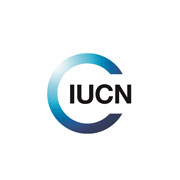
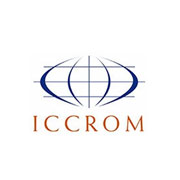
Decisions / Resolutions (4)
The World Heritage Committee,
- Having examined Document WHC-14/38.COM/7B.Add,
- Recalling Decision 22 COM VII.30 and 33 COM 8B.40 adopted at its 22nd (Kyoto, 1998) and 33rd (Seville, 2009) sessions respectively,
- Welcomes the actions undertaken by the State Party in response to the recommendations made by the 2013 Advisory Mission related to the project for the Instauration of St. Clement’s University at Plaoshnik and recommends that dialogue between the State Party and the Advisory Bodies continue as the project progresses further;
- Encourages the State Party to implement all recommendations made by the 2013 Advisory Mission for improving the state of conservation of the property with particular attention to the following:
- Finalise the Management Plan for the property and the Integrated Protection Plan for the Old Town Nucleus of Ohrid and submit an electronic and three printed copies of the draft revised management plan for review by the World Heritage Centre and the Advisory Bodies,
- Develop a detailed urban plan for the entire monumental ensemble, in line with the existing regulatory framework, to ensure the enforcement of provisions and to control activities that might impact the entire protected area,
- Strictly enforce legal and regulatory provisions and establish a management structure to control development pressures and interventions at the property,
- Develop a comprehensive action plan for the lakeshore to provide adequate guidance on the type and extent of potential developments in relation to the attributes of Outstanding Universal Value (OUV) of the property and its setting;
- Expresses its concern over several planned major infrastructure projects within the property, including the Ljubanishta 1 and 2 coastal developments, the Ohrid-Peshtani road, and the Galičica Ski Centre and Resort, and requests that technical details, including Environmental and Heritage Impact Assessments (EIAs/HIAs), for projects under consideration within the property be submitted to the World Heritage Centre for review prior to making any decisions that would be difficult to reverse, in accordance with Paragraph 172 of the Operational Guidelines ;
- Considers that the planned construction of the Galičica Ski Centre and Resort is likely to have significant direct and indirect impacts on the OUV of the property, and requests the State Party to halt the project until the abovementioned impact assessment has been completed and reviewed;
- Also requests that selected project proposals for the implementation of the Pan European Railway Corridor VIII be submitted to the World Heritage Centre upon completion for review by the Advisory Bodies and urges the State Party to identify alternative routes that do not cross the property;
- Also encourages the States Parties of Albania and the former Yugoslav Republic of Macedonia, with the support of the World Heritage Centre and Advisory Bodies, to continue to cooperate in the framework of the Upstream process towards the preparation of a new nomination for a transboundary extension of the property to include the Albanian part of Lake Ohrid and its watershed, in order to strengthen the values and integrity of the property;
- Further requests the State Party to submit to the World Heritage Centre, by 1 February 2015, a report, including a 1-page executive summary, on urgent progress required to address the issues mentioned above, and by 1 December 2015, an updated report, including a 1-page executive summary, on the state of conservation of the property and the implementation of the above, for examination by the World Heritage Committee at its 40th session in 2016.
The World Heritage Committee,
- Having examined Document WHC-14/38.COM/9A,
- Recalling Decision 34 COM 13.III adopted at its 34th session (Brasilia, 2010), Decision 35 COM 12C at its 35th session (UNESCO, 2011), Decision 36 COM 12C at its 36th session (Saint Petersburg, 2012) and Decision 37 COM 9 at its 37th session (Phnom Penh, 2013);
- Welcomes all the actions undertaken to improve the processes and practices prior to consideration by the World Heritage Committee of a nomination (the ‘Upstream Processes’) and commends the States Parties, the Advisory Bodies and the World Heritage Centre for the pilot projects in which progress was made;
- Acknowledges that outside of the referenced pilot projects, in order to be effective, the upstream support should ideally intervene at an early stage, more precisely at the moment of the revision of States Parties Tentative Lists;
- Also commends the State Party of Namibia for the inscription on the World Heritage List of the Namib Sand Sea at the 37th session (Phnom Penh, 2013), Saudi Arabia for the submission of the nomination on the Rock Drawings in the region of Hail, and Uruguay for the submission of the Cultural and Industrial Landscape of Fray Bentos;
- Urges the States Parties concerned that have not yet done so, to fully collaborate providing technical and financial support to implement the required actions to make progress with the pilot projects and encourages them to seek assistance from the World Heritage Centre to identify opportunities to secure resources to progress the project, if necessary;
- Calls upon the international community to provide technical and financial support to assist the States Parties concerned in the implementation of their pilot projects which were not able to identify adequate resources;
- Requests the Advisory Bodies and the World Heritage Centre to report on the progress in implementing the pilot projects for consideration by the World Heritage Committee at its 39th session in 2015;
- Also requests the World Heritage Centre and the Advisory Bodies to draft a proposal in view of including the Upstream Process in the Operational Guidelines and to specify their implementation modalities, in the light of the outcomes of the Director General’s meeting “World Heritage Convention: Thinking ahead”, for examination by the World Heritage Committee at its 39th session, in 2015.
The World Heritage Committee,
1. Having examined Document WHC-11/35.COM/12C,
2. Recalling Decision 32 COM 10 adopted at its 32nd session (Quebec City, 2008), Decision 33 COM 14A.2 adopted at its 33rd session (Seville, 2009), 34 COM 12 adopted at its 34th session (Brasilia, 2010) and Resolution 17 GA 9 adopted at the 17th General Assembly of States Parties (UNESCO Headquarters, 2009);
3. Taking into consideration the findings and recommendations of the evaluation of the Global Strategy for a Representative, Balanced and Credible World Heritage List (Final report of the Audit of the Global Strategy and the PACT initiative, Document WHC-11/35.COM/INF.9A),
4. Welcomes all the actions undertaken to improve the processes and practices prior to consideration by the World Heritage Committee of a nomination (the 'upstream processes') and expresses its appreciation to States Parties for their collaboration in the selection of the proposed pilot projects and to the Advisory Bodies and the World Heritage Centre that prepared the feasibility studies;
5. Takes note of the pilot projects that have been chosen to implement this experimental approach and requests the States Parties concerned to nominate focal points for this purpose;
6. Requests the States Parties concerned to fully collaborate, providing technical support and seek funding to implement the required actions, encourages them to seek assistance from the World Heritage Fund, if necessary and calls upon States Parties and the international community to provide technical and financial support to assist the States Parties concerned in the implementation of their pilot projects;
7. Decides that priority should be given to Preparatory Assistance requests submitted by concerned States Parties who do not have the necessary financial means;
8. Invites the Director General to use existing extra-budgetary funds to support the upstream processes and to seek new extra-budgetary funds for this purpose;
9. Also requests States Parties whose heritage is already well represented on the World Heritage List to consider linking each of their nominations with a nomination presented by a State Party whose heritage is un-represented or under-represented as foreseen in paragraph 59c of the Operational Guidelines, in the framework of the Global Strategy;
10. Further requests the Advisory Bodies to work with the States Parties concerned to place the work of the upstream process within the larger context of national capacity building, and where possible, link this work to the development of national capacity-building strategies foreseen within the World Heritage Capacity-Building Strategy;
11. Requests furthermore the Advisory Bodies and the World Heritage Centre to report on the progress in implementing the pilot projects for consideration of the World Heritage Committee at its 36th session in 2012.
Read more about the decisionVII.30 The Committee noted the decisions of the twenty-second extraordinary session of the Bureau as reflected in the Report of the Bureau session (Working Document WHC-98/CONF.203/5) and included in Annex IV on the following properties:
Tasmanian Wilderness (Australia)
Mount Taishan (China, Peoples Republic of)
Mount Huangshan (China, People's Republic of)
Ohrid Region with its Cultural and Historical Aspect and its Natural Environment (Macedonia, Former Yugoslav Republic of)
Cliff of Bandiagara (Land of the Dogons) (Mali)
Tongariro National Park (New Zealand).
Read more about the decision